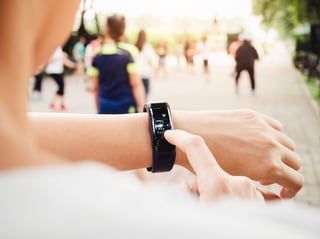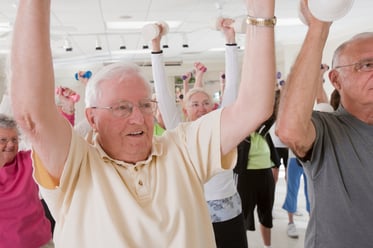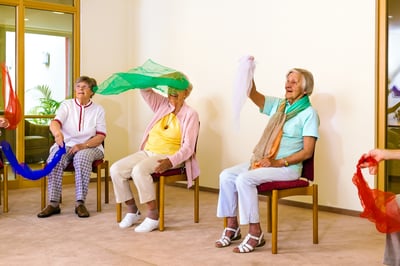 Every year the American College of Sports Medicine (ACSM) conducts a survey across the United States to determine what trends will be seen in the coming year. Completed by over 1,800 fitness professionals, the survey has found the following to be the top 10 fitness trends for 2017.
Every year the American College of Sports Medicine (ACSM) conducts a survey across the United States to determine what trends will be seen in the coming year. Completed by over 1,800 fitness professionals, the survey has found the following to be the top 10 fitness trends for 2017.
10. Wearable technology, such as activity trackers, smart watches, heart-rate monitors, smart eyeglasses, and GPS tracking devices. Check out this blog post about the challenges with high tech wellness.
9. Bodyweight training requires minimal to no equipment and can be done anywhere, which makes it an inexpensive way to stay fit. Check out @NIFSquickfit on instagram for inspiration to use your bodyweight to train at home.
8. High-Intensity Interval Training (HIIT) involves short bursts of exercise followed by a short period of rest or recovery and can take 30 to 60 minutes, or longer, to complete.
7. Educated and experienced fitness professionals are becoming more available as the ways to get certified and educated grow. Finding professionals who have gotten certified through nationally accredited programs can help consumers make an important decision more easily. Looking to staff your onsite fitness center, check out how you can get back to business and let the professionals handle your fitness center.
6. Strength training has been trending since the first survey was published by ACSM in 2006. Strength training can help many to improve or maintain current levels of strength. Grab your co-workers and get fit at lunch.
5. Group training is designed for participants with varied levels of fitness. Group fitness instructors specifically program these classes for a fun, motivational, and effective large-group experience.
4. Exercise Is Medicine is a global health initiative based on the belief that exercise can be preventative as well as a way to treat diseases. This initiative brings health care professionals together with exercise professionals to include physical activity as treatment.
3. Yoga can be practiced in many forms, including but not limited to Power Yoga, Yogalates, and hot Yoga. Yoga uses specific types of postures to help with flexibility, relaxation, and health. Can't make it to Yoga? Take a moment to stretch at your desk. Making time for a five minute stretch break will help you ease tension and relax the mind.
2. Personal training has not left the top ten since the first survey was published in 2006. Personal trainers will continue to be an integral part of the professional staff in all areas of health and fitness centers.
1. Exercise and weight loss combine calorie restriction and exercise programming to control weight loss.
The full list of top 20 trends is available in the article "Worldwide Survey of Fitness Trends for 2017.”
Looking to improve the health and wellbeing of your employees this year? Let us handle your program and you get back to doing what you love to do. Click below for our quick read to find out how we make corporate fitness easy.




 Activities Directors in assisted living and memory care environments are busy. They have a lot of balls in the air, not the least of which is some type of movement-based programming for their residents. Unfortunately, that specific element of their enrichment programming often takes a back seat to other priorities.
Activities Directors in assisted living and memory care environments are busy. They have a lot of balls in the air, not the least of which is some type of movement-based programming for their residents. Unfortunately, that specific element of their enrichment programming often takes a back seat to other priorities.
 While we've seen significant progress in what exercise can look like for residents in independent living (IL), for many communities, there remains something of a disconnect in making sure residents throughout the continuum of care have access to the same or similarly robust services and amenities.
While we've seen significant progress in what exercise can look like for residents in independent living (IL), for many communities, there remains something of a disconnect in making sure residents throughout the continuum of care have access to the same or similarly robust services and amenities. 
 Every year the
Every year the 